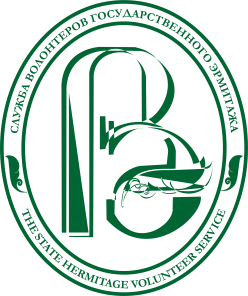Photos:
Hermitage Volunteers and the Abolition of Serfdom
On 3 March 2016, the Historical-Information Service of the State Hermitage Museum organised a special excursion for St. Petersburg and regional journalists in honour of two important dates in Russia’s history: the 155th anniversary of the abolition of serfdom and the 135th anniversary of the assassination of Alexander II, Russia’s «Tsar-Liberator».
Hermitage volunteers prepared research material and provided excerpts from different countries’ 1861 newspapers describing the reactions of these countries to the emancipation of the serfs in Russia. This material is available below.
A special five-hour excursion was organised for the journalists, including visits to four important local sites for these two historical events. Museum representatives provided lively retellings and organised unique exhibitions for the occasion.
The excursion began in the Grand Church of the Hermitage Museum, where the Head of the Historical-Information Service of the Hermitage, Yulia Zorakhovna Kantor, opened the event with a welcome speech. Three rare artefacts were on display specifically for the occasion: the watercolour painting, «Palace Square, 19th February 1861», a souvenir mug from the 50th anniversary of the emancipation reforms with quotations from the Emancipation Manifesto about the abolition of serfdom, and a commemorative medal «In memory of the freeing of Russia’s peasants from serfdom» in 1861. Additionally, journalists could observe the jacket worn by Tsar Alexander II on the day of his assassination.
Excursion participants were then shown the private rooms of the emperor in the Winter Palace, including his bedroom, where the Tsar spent his last breathing moments.
After their visit to the Winter Palace, journalists relocated to the Peter and Paul Fortress across the Neva River. Here, journalists saw copies of the Emancipation Manifesto as well as commemorative medals and drawings in which serfs thank their gracious Tsar for their new freedom. Participants visited the Peter and Paul Cathedral, in which members of the royal family, including Tsar Alexander II, are buried. The guide shared details of the Tsar’s funeral ceremony, which took place in the cathedral.
The group then visited the Museum of Political History, where the museum representative focused on the numerous assassination attempts on Tsar Alexander II.
As a conclusion for the event, the group of journalists visited the Church of Our Saviour on Spilled Blood, which was built as a chapel-monument directly on the site of the assassination of Alexander II.
Participants were able to directly and meaningfully encounter the historical events from the period of Tsar Alexander II’s reign thanks to the broad, well-structured excursion programme.
The materials gathered from 1861 Russian and foreign newspapers by Hermitage volunteers from Russia, Italy, Great Britain, the United States, and Germany allowed the journalists to learn not only about historical events in Russia, but also about the worldwide reactions to these events. These materials can be downloaded here.
For me, as a foreign student, the excursion became one of many wonderful, memorable moments while working at the Volunteer Service of the Hermitage, and the event was extremely informative. I especially appreciated the narrations of the guides who introduced me to both the light and dark sides of Russian history in an enthralling way.
As the event organisers noted, excursion participants were able to «experience history with their eyes, ears, hands, and legs».
Inna Kerasi, Hermitage Intern, 2016
